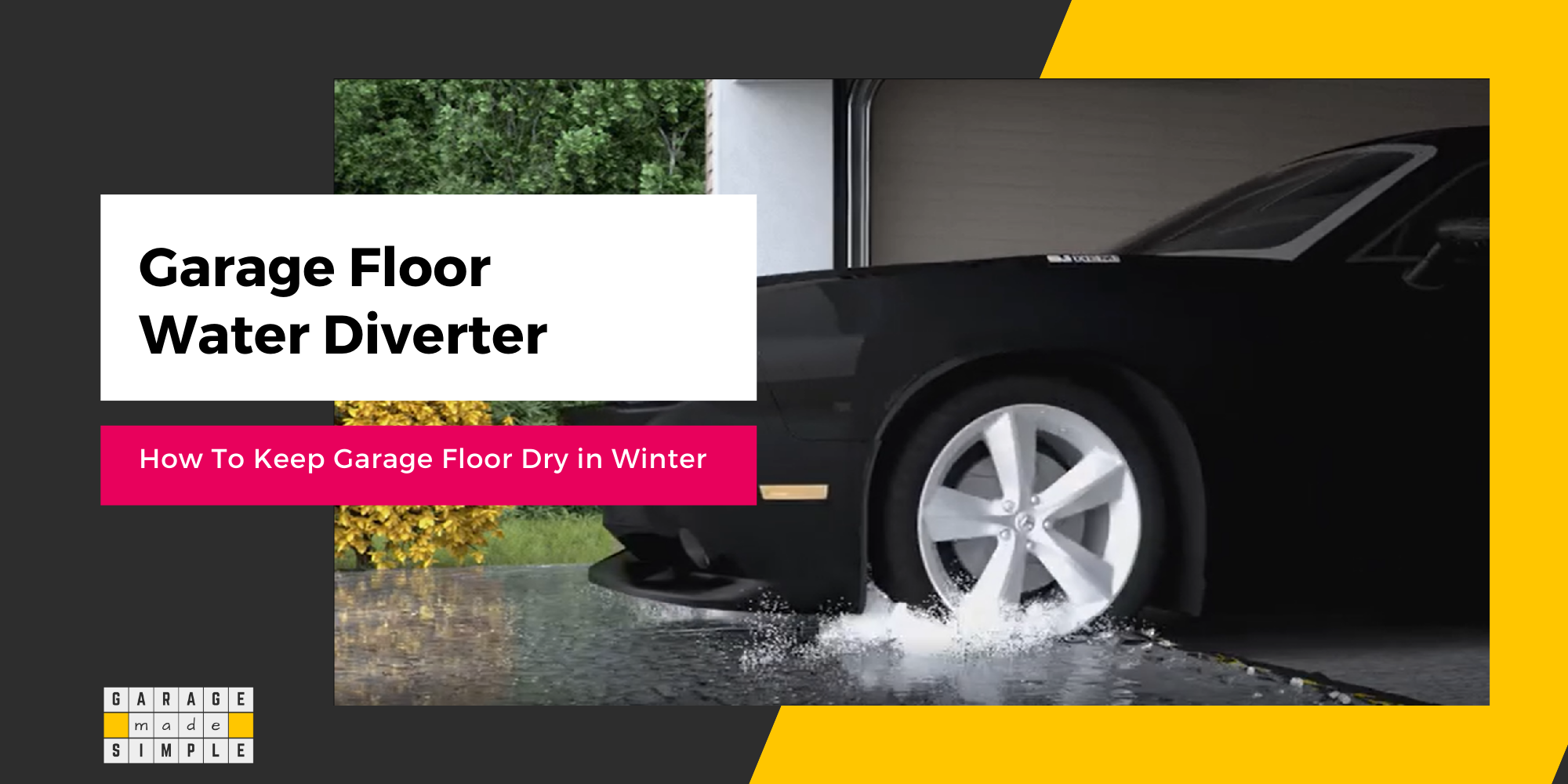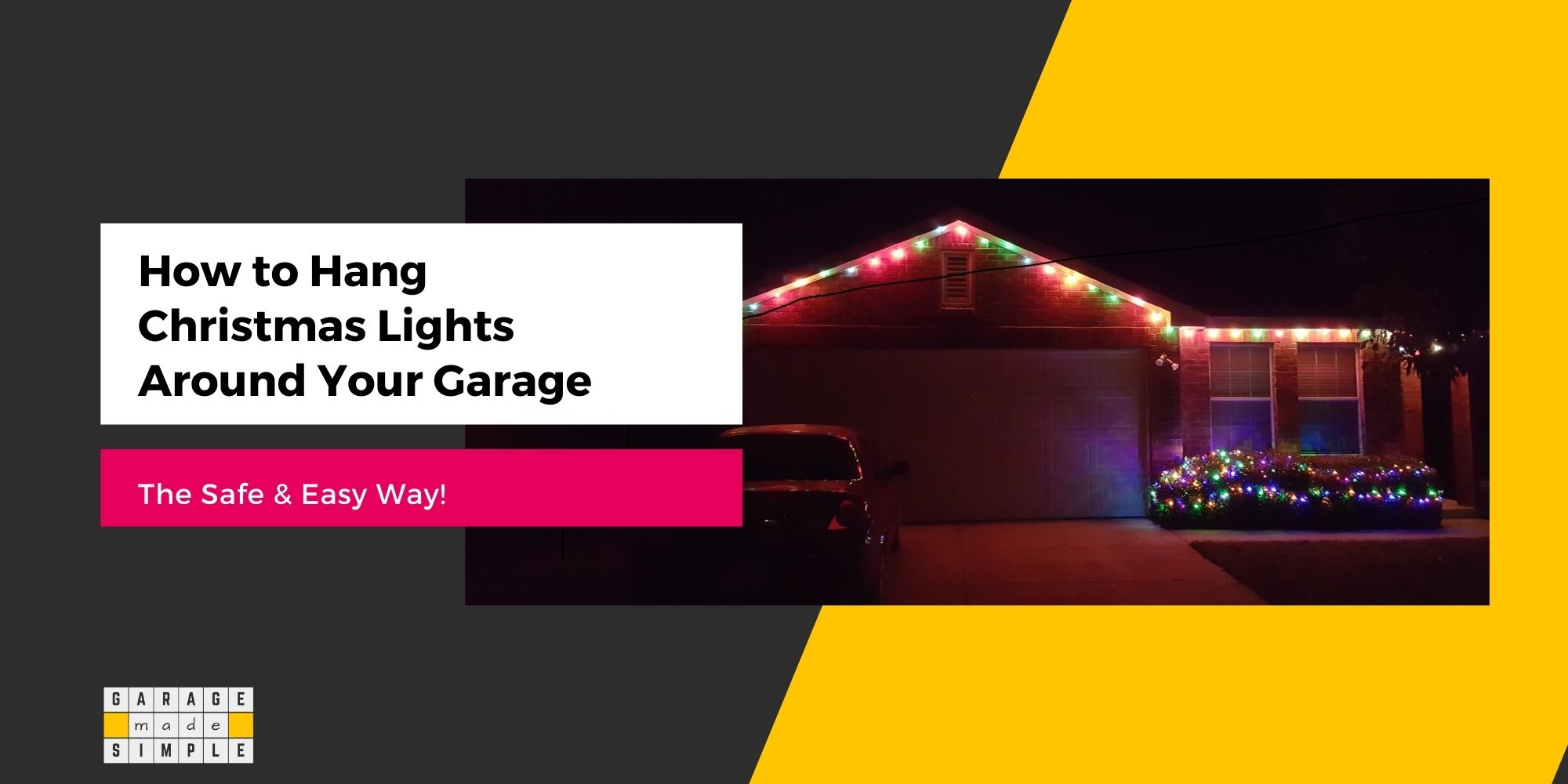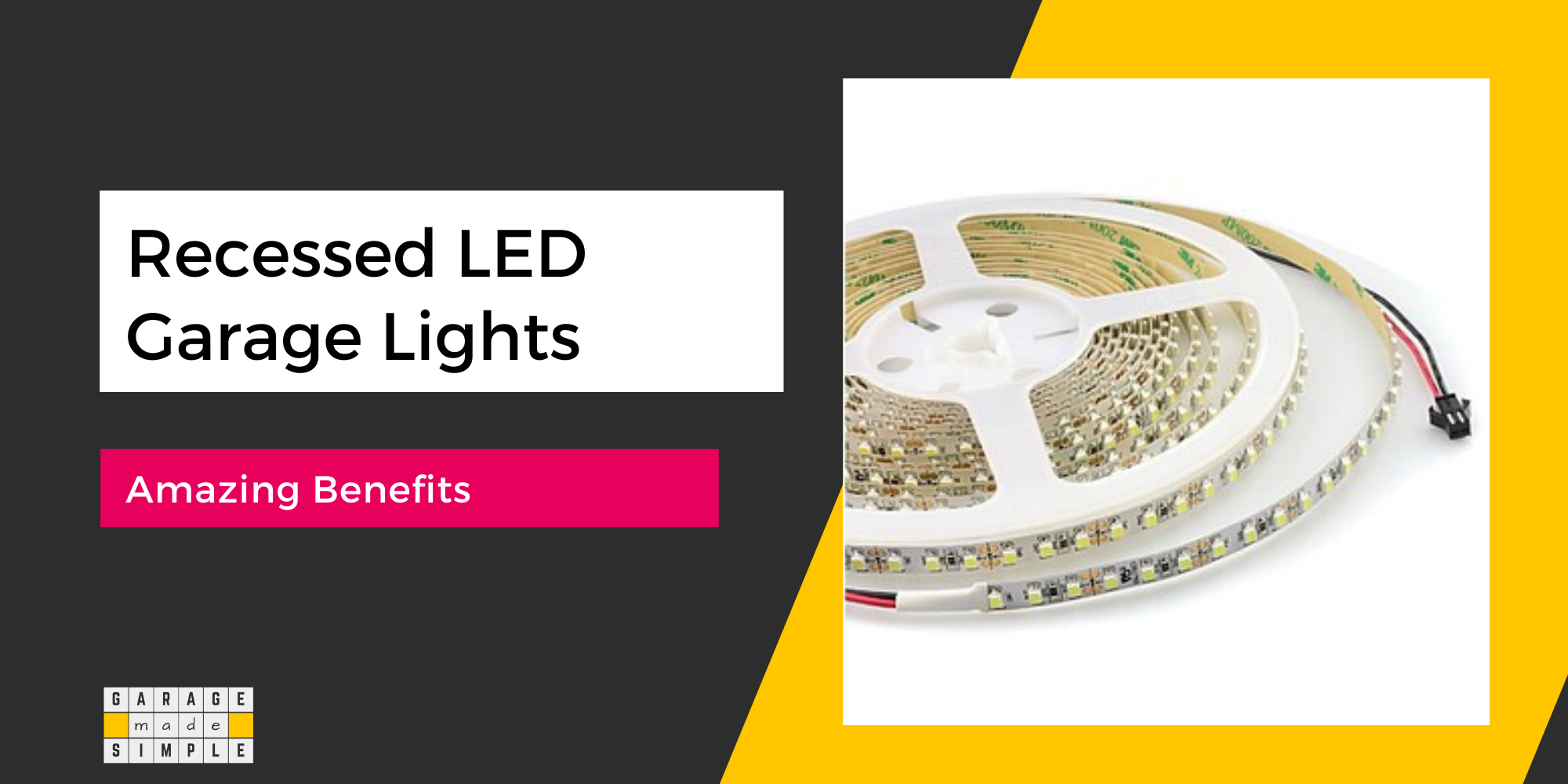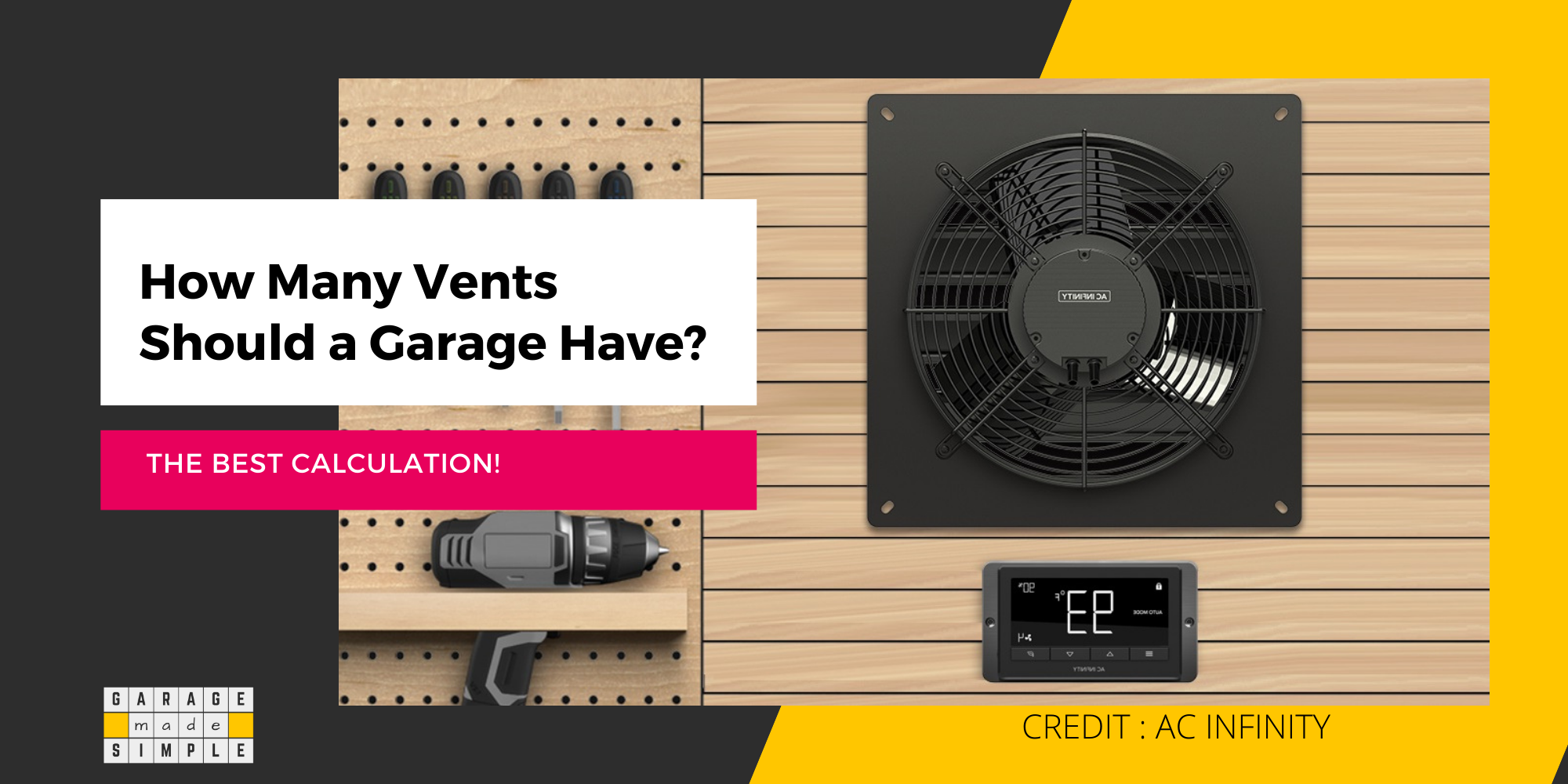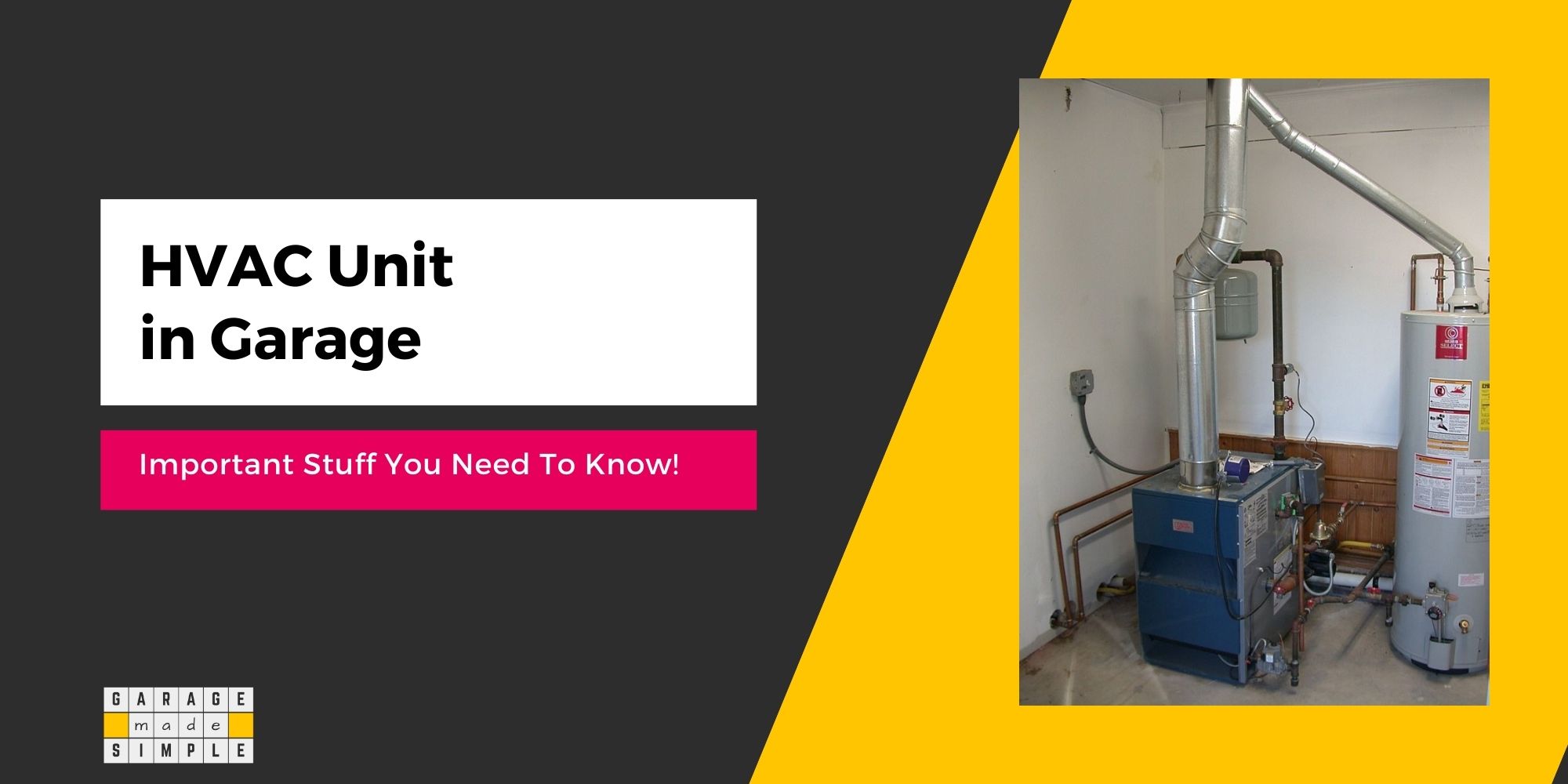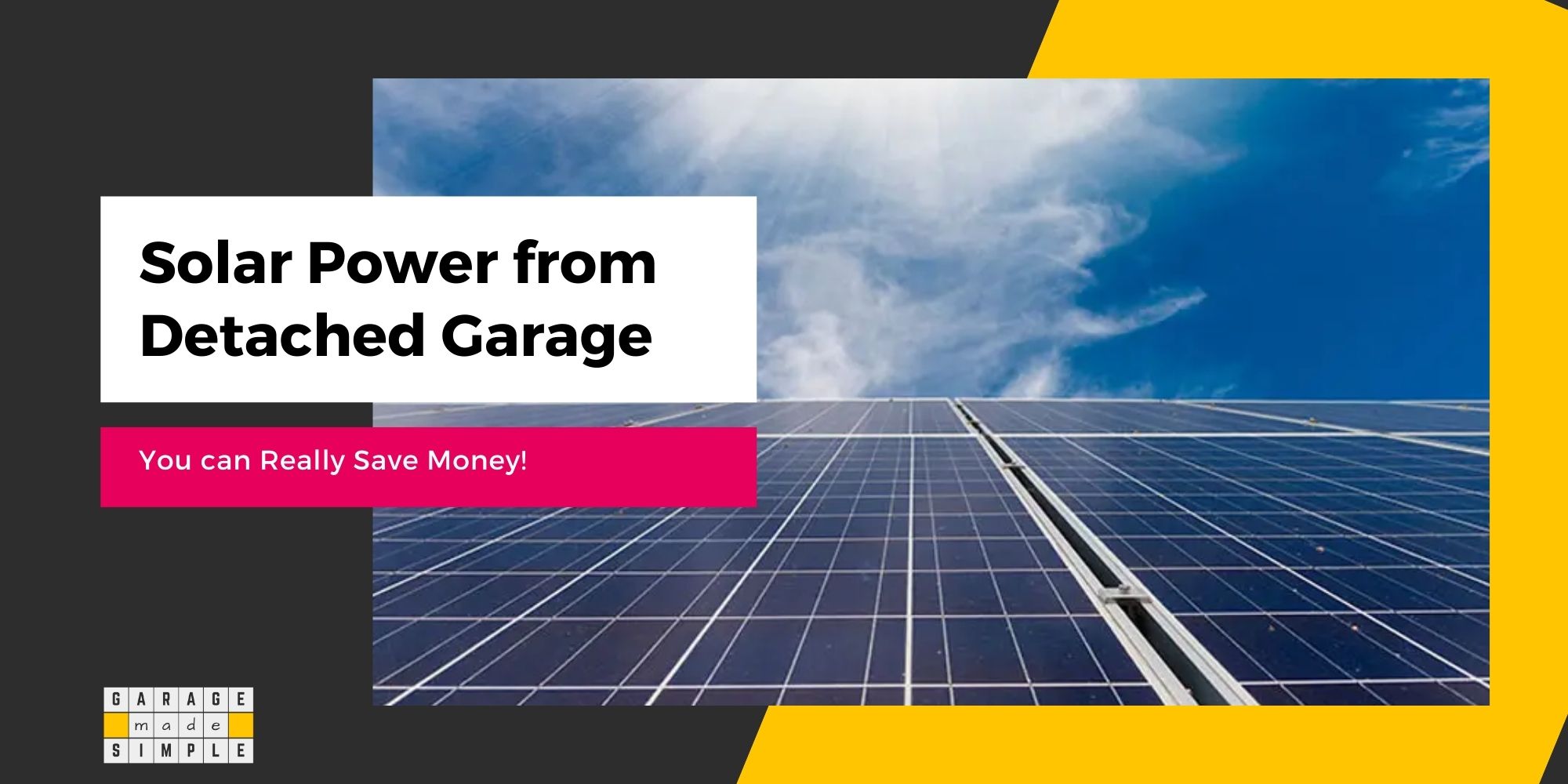Simple and Easy Guide to Best Garage Floor Drain Solutions
garagemadesimple.com is a participant in the Amazon Services LLC Associates Program, an affiliate advertising program designed to provide a means for sites to earn advertising fees by advertising and linking to Amazon.com . The website is also an affiliate of a few other brands.
Garage Floor Drain Solutions
For finding the best Garage Floor Drain Solutions and to answer the question “Can I put a drain in my garage?”, you must start by knowing the:
- Building Code in your Area
- Pitch or the Slope of the Floor
- The Real Drainage problem
- Drain Options Available
Pools of water on your garage floor are not just a messy sight. They are a safety hazard. You can slip, fall and hurt yourself.
The water is also detrimental to the life of the garage floor. Water finds it’s way into the pores of the concrete floor.
The water within the concrete then expands and contracts as the temperature changes. This puts physical pressure on the cement rich top crust, causing it to break down into dust.
If you see pools of water on your garage floor, especially after a rain, then the drainage system in your garage is either inadequate or non-existent. You need to do something about it.
In this post I will explain all of the steps that you must take to find the Best Garage Floor Drain Solution for your specific case. This blog post will be a Simple & Easy Guide for you.
Check the Building Code First
Check the building code in your area first. Most likely drainage will be allowed but of course you will be required to comply with the local rules and regulations. Local Authorities are very much concerned about what will go in your garage drain and where the drain will lead to.
Local Authorities having the jurisdiction in your area may be counties, boroughs, townships, towns, municipalities or cities. Whatever the name, they have jurisdiction over your area and are also responsible for providing basic public infrastructural facilities.
Local Authorities have two sewer systems, by which they collect liquid waste from homes and move them to the disposal point. They are the “sanitary sewer” system and the “storm sewer” system.
The first is to handle the biological waste from kitchens, bathrooms & toilets, the second is to handle the rain water from the roof, driveway etc.
The run-off from a garage is mostly water, but can have gasoline, oils, greases and other harmful & hazardous chemicals. This is why municipalities have to enforce strict regulations on garage drains.
Garage Floor Slope Code
Modern home builders & contractors try to design the house to be at a slight elevation from the curbside. This way they can slope the garage floor towards the garage door and the driveway slope away from the garage door to the street. So all the water is flowing in one direction, that is the storm drain along the street.
The 2021 International Residential Code (IRC) Section 309.1 stipulates
Garage floor surfaces shall be of approved noncombustible material. The area of floor used for parking of automobiles or other vehicles shall be sloped to facilitate the movement of liquids to a drain or toward the main vehicle entry doorway.
In spite of this slope, you still need a drain system in the garage. If you do not have a drain system, water will collect and form a pool around your garage door. Remember your garage door has a bottom seal and a threshold seal! So water can’t just flow out without a drain.
You also need a drain system equipped with an oil water separator or some such mechanism, to ensure that you are not accidentally disposing off oil, grease or other chemicals into the municipal sewage or storm sewer lines.
If the driveway is sloping in into the garage door, and not away from it, then you need a drain system just outside the garage door too. You want to trap and drain away the rain water before it enters your garage.
What Really is Your Problem?
What really is your problem concerning the drain system in your garage?
- For whatever reason, your garage floor does not have any drain.
Well. then you just need to put in a drain. Read on to find the best way to do it.
- There is s a drainage system but the water pools up at the inlet.
This most probably means that the drain pipe or channel is clogged. You need to clean and unclog it.
If you are not able to do that, using a standard cleaning process, then the drain pipe or channel may be damaged. In this case you may have to dig up and either repair or replace the pipe in the damaged area.
- There is a drainage system but water pools up in areas away from the inlet.
This implies that your garage floor has got multiple low points. Possibly there was no problem when the floor was installed, but now the floor may have sunk in some areas.
This problem requires a fair amount of work. The post explains how to do it.
Garage Floor Drain Inlet
Quite obviously you need the inlet to be at the lowest point on your garage floor. Your garage floor may have multiple slopes and multiple low points. This may be due to poor design or execution at the initial stage.
But it may also have developed over a period of time. Concrete floors can sink unevenly for a variety of reasons. Some of the soil under the concrete may have been washed away by rain water, the soil may have dried & shrunk or the initial compaction was poor. If the stress is too much the concrete floor may even crack.
Whatever the reason, multiple low points will give you a (or should I say multiple) drainage problems. You would need multiple inlets to your drainage system and potentially a complex network of drain pipes or trenches.
But wait! You do not need to do that. Fixing your garage floor, so that your existing drain inlet becomes a single low point, is a much better solution.
Using a self leveling compound such as Quikrete Fast-Setting Self Leveling Floor Surfacer can help if the water pools cover small areas or are shallow. However, if the water pools in large areas and the pools are deep, self levelling compounds may not solve the problem.
You need a slope towards the drain inlet, not a level floor. So you will need to resurface the garage floor using a fast setting concrete mix that is not too fluid. You want to trowel it into a desired slope.
The slope recommended for smooth drainage is 1-2%. The trench drain inlet is generally near the garage door. This means that for a 20 feet deep garage, the floor at the opposite end should be 2-4 inches higher than the trench drain grate.
Types of Garage Floor Drains
Garage Floor Drains come in two types
Square Drains
Square Drains (can be round too) look pretty much like the one in your bathtub or kitchen sink. In design terms, that is what they really are. Depending on the size of your garage you can install one or more of these.
Having one in each bay is recommended.
Of course, in the case of Square Drains, the concrete floor has to pitch towards the Square Drain inlet from all four directions. Square Drains are cheaper and easy to install, while the concrete garage floor is being placed.
However, installing them as an afterthought is quite a job!
Trench Drains
As the name suggests these are long like a trench in a war zone. They have a sturdy grating on top. They are best installed inside, on the concrete garage floor, near and along the garage door. They are more expensive but can drain a lot more water in a short time.
Further for a Trench Drain you need to pitch the floor only in one direction; from the rear wall to the garage door.
Many garage floors are built with a slope towards the garage door but without any drainage system. Installing a Trench Drain in such garages is a lot easier than installing a Square Drain.
You can also install a parallel trench drain outside on the driveway. This will catch most, if not all, of the rain water, in case of heavy downpour, before it enters and floods your garage floor.
Source 1 Drainage Trench & Driveway Channel Drain with Concrete Grey Grate available at Amazon may be worth considering.
U-Drain or Slot Drains are basically just Trench Drains, but without the grate. Absence of the grate makes them look very sleek, even invisible. They are easier to clean too.
WHY CHOOSE U-DRAIN™?
U-drain a company from Canada has a very sleek design. Their SINGLE SLOT INTAKE has revolutionized the trench drain industry. A sleek look and far easier to maintain. The benefits of U-drain are:
- Once your concrete has been poured, U-drain™ is fully encased, only the slot is visible. This provides a sleek finish.
- U-drain™ has no grates to get clogged and dirty looking, making it an excellent choice for garage floor drainage, poolside drainage, patio drainage and more.
- There are no grates in the floor drainage system to plug, remove and clean. The intake of the drain is its simple slot.
- If the floor drain could use a cleaning, simply insert the cleaning paddle and run it along the length of the drain to the sump pit.
- The U-drain™ features a sump pit that is designed to be plumbed out to either a weeping tile or some other form of drainage so that all drain water is disposed of efficiently.
- Residential U-drain™ has an ADA compliant 1/2″ slot opening.
- Residential U-drain™ sits flush with the floor surface and does not pose a tripping hazard for foot traffic.
Sump Pits & Oil Water Separator
Now the Drain Pipes or the Trench Drains need to channel the water from the garage to the storm sewer system. In between it must go through a Sump Pit and possibly an Oil Separator.
So what is a Sump Pit? It is a big box, maybe 1 cubic foot, at the end (or even in between for long drains) of the drain pipe or channel, to collect the solid debris in the water. This helps to ensure the drain or channel does not get clogged.
The Sump Pit has a lid or a cover, which can be opened from time to time, to clear the accumulated debris. The Sump Pit is connected to the storm sewer.
If the local authorities insist that you must also install an oil water separator, then you must. It is best to ask them the brand and model approved by them. No point in getting in trouble with the law!
Is it a DIY Project?
It is certainly not a regular DIY project. Putting a drain in your existing garage floor will require
- Clearing up the garage, or at least moving stuff to one side and dust proofing it
- Digging up the concrete floor in portions you want to lay the Drain Pipes or Trench Drains
- Installing the drain and placing fresh concrete to hold them
- Connecting the Drain Pipes or the Trench Drain to a Sump Pit, an Oil Separator (if mandated by law) and connecting the Sump to the Storm Sewer system using gravity or a pump (if required)
- Resurfacing the concrete floor to get the correct slope or pitch to the Drain Inlet
I would say this is surely a job for a professional!
Thank you very much for reading the post. I do hope you found it informative and useful.

